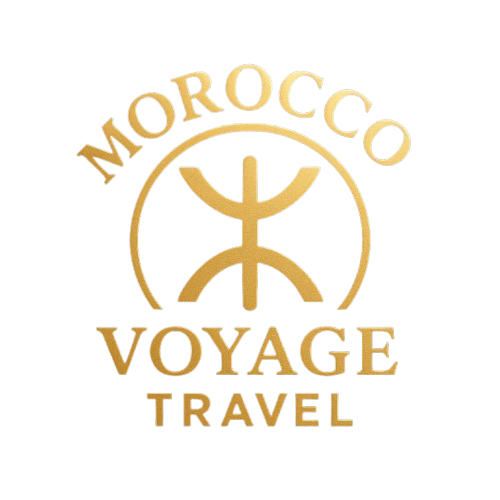From Marrakech’s hidden doors to the vast hush of Merzouga’s dunes, the desert calls.
You’ll trace caravan paths, share mint tea with nomads, and chase sunsets on camelback.
Seven days. A thousand heartbeats. One unforgettable rhythm beneath endless skies.
Your hotel
8:00 AM
Ride camels through the Sahara Desert (Merzouga & Zagora)
Visit the iconic Ait Benhaddou, a UNESCO World Heritage site
Explore the Todra Gorge and Dades Valley
Discover the charm of Ouarzazate and its film studios
Experience authentic Gnawa music in Khamlia village
Stay overnight in desert camps under the stars
Visit traditional Berber villages and nomadic families
Cross the High Atlas Mountains and enjoy breathtaking views
You arrive not just in a country, but in a symphony of scents, colors, and history. But today is for rest. A driver greets you at the airport, your name neatly written on a sign, and with a knowing smile he guides you through the outer veins of Marrakech. No souks today, no drums of Djemaa el-Fna. Instead, you’re taken straight to a riad tucked behind plain walls, hiding a world of mosaics, lanterns, and fountains.
Mint tea arrives in silver teapots, poured high with elegance. This is your first sip of Moroccan rhythm—slow, fragrant, and welcoming. Tonight, the only goal is to rest, maybe listen to the call to prayer echo off the walls, and let the walls of the old city cradle you in peace.
The real journey begins as you wind up into the High Atlas Mountains. The road is a ribbon of switchbacks through valleys dotted with Berber villages, where goats roam rooftops and snow lingers above clay homes.
Your guide tells you stories—of caravans, of warriors, of sultans—as you cross the legendary Tizi n’Tichka Pass, and by midday, you’re standing at the foot of Ait Benhaddou.
It’s not just mud and straw—it’s poetry in earth tones. Walk its alleys and feel the film reels that rolled here (Gladiator, Lawrence of Arabia, Game of Thrones). Later, you arrive in Ouarzazate, where studios meet kasbahs, and sleep comes beneath desert stars.
Today you dive deeper. Southward you go, into the endless groves of the Draa Valley, where date palms stretch to the horizon and ancient kasbahs crumble quietly beside the river.
You stop in Agdz, sip sweet tea in a mudbrick courtyard, and roll onward to Zagora, a town that once whispered to camel caravans bound for Timbuktu. Here begins your camel ride, not a performance, but a quiet glide across the golden land as the sun bows to the dunes.
At camp, music stirs. Drums rise like a heartbeat, fires flicker, and above you—the stars pour out endlessly. This is desert silence, and it sings.
You rise early, brushing sleep from your eyes as you ride out of camp. The land shifts—rock to sand to dry mountain as you pass through Tazzarine and Nkob, timeless villages carved into the cliffs.
In Rissani, you feel the pulse of desert trade. The souk hums with life: spices, dates, wandering donkeys. You’ll smell cumin and leather, hear haggling in Arabic and Berber.
By late afternoon, you see them: the Erg Chebbi dunes, rising like a burnt-orange ocean. Camels await. Another gentle trek leads you to your second desert camp, where the sand is softer, the stars sharper, and the silence even deeper.
Today is not for driving—today is for listening. In Khamlia, a tiny desert village, you meet the Gnawa people. Their ancestors were brought from West Africa, and their music—raw, soulful, hypnotic—rattles the bones and frees the mind.
After tea and rhythms, you roam by 4×4 to visit nomadic families, living simply in the shadows of dunes, raising goats and stories. You’ll sit in their tents, taste their bread, and realize that luxury is not always comfort—it’s knowing where you belong.
The afternoon brings freedom: try sandboarding, climb the highest dune, or just let the silence wash over you. Another night under stars waits, with stories around the fire.
Leaving the dunes is hard—but the road ahead is spectacular. You roll northward toward the Todra Gorge, where cliffs rise like citadels and a stream whispers at their feet. Take a walk between the walls, hear the echo of ancient footsteps.
Then into the Dades Valley, where rock formations twist like fingers and gravity seems to bend around the landscape. The road coils like a snake, and every turn is another postcard. Your lodge tonight is carved into a cliff, surrounded by almond trees, rose fields, and the wind that speaks in secrets.
On your final day, you move through the fragrant Valley of Roses, where petals are gathered at dawn and turned into perfume and poetry. In Kalaat M’Gouna, the scent lingers everywhere—in soaps, oils, even the smiles of the vendors.
Later, the Skoura Oasis greets you—an ocean of palms hiding the majestic Kasbah Amridil, one of Morocco’s oldest mudbrick fortresses. The journey winds once more through the Tizi n’Tichka Pass, and by late afternoon, Marrakech comes back into view.
The city you first met in stillness now hums in your memory, but you are changed. You’ve seen Morocco’s veins—the dunes, the songs, the silence, the road—and now, you carry its story with you.
